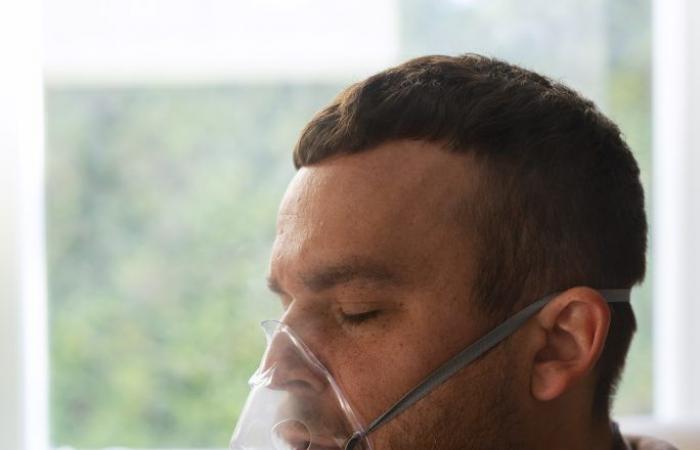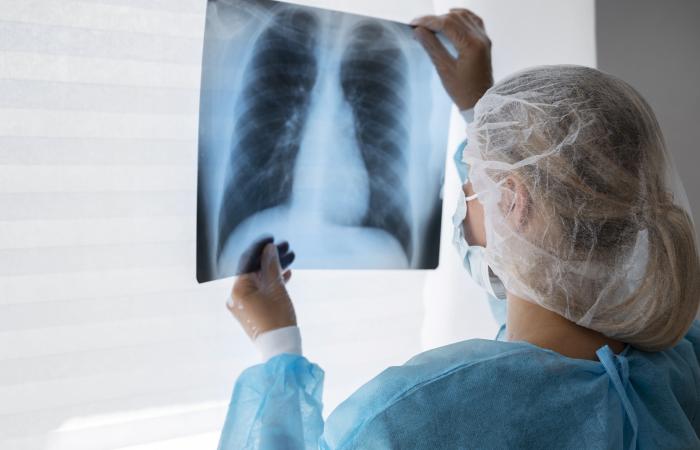03/24/2024
On world day to combat the disease, the challenge is still adherence to treatment
Eliminate tuberculosis (TB) in Minas Gerais, Brazil and the world by 2030. This goal requires the joint effort of public health services and people infected by an ancient disease that took the lives of 1.3 million men, women and children worldwide in 2022. A daily average of 3,500 deaths. On national soil, there were 5 thousand deaths and 78 thousand new cases in the same year. Globally, it is the second most deadly infectious and transmissible disease (after Covid-19).
The main obstacle to curing tuberculosis continues to be abandonment of treatment. It is estimated that an infected person can infect 10 or 15 others with whom they come into contact within a year. As the pulmonologist at Hospital Júlia Kubitschek, from the Fhemig Specialties Complex and state reference for cases of multidrug-resistant tuberculosis Ednei Guimarães, explains, “when the patient correctly follows the instructions, taking the medications until the end of the stipulated period, the cure is close. 100%”.
In the territory of Minas Gerais, in the last four years, every day, an average of 14 people were diagnosed with tuberculosis, in a total of 20,363 reported cases. Another 1,735 died from the disease in the same period, including general cases and other causes associated with TB (comorbidities). Considering only new cases, which totaled 15,977 occurrences, almost 50% achieved a cure, that is, 7,506 people overcame the disease.
Correct adherence
“Although tuberculosis is a curable disease, it brings with it seriousness and the risk of death, especially in cases where symptoms take a long time to be noticed and treatment is started late. Death can also occur in situations where treatment is abandoned and the disease recurs”, adds the pulmonologist.
Correct adherence is crucial both from an individual point of view and also for collective health and the elimination of a global epidemic in the next six years, as proposed by the World (WHO) and Pan-American Health Organizations (PAHO), which outlined goals based on 2022 reports.
Joint work
In line with global organizations, which also respond to this year’s campaign theme: “Yes, we can end tuberculosis! ”, the Ministry of Health (MS) and the State Department of Health of Minas Gerais (SES-MG) established, in 2023, the National campaign to eliminate the disease – Brasil Livre da Tuberculose and the State Plan to End Tuberculosis as a Public Health Problem – strategies for 2023-2026, respectively.
The Minas Gerais Committee for the Social Control of Tuberculosis, which is part of the Leprosy and Tuberculosis Coordination (CHT) of the SES, promotes the participation of civil society in advocacy actions (defense and arguments in favor of the cause), communication and social mobilization. The CHT is made up of public bodies, non-governmental entities, people affected by tuberculosis and those living with HIV/AIDS or other comorbidities, interested in supporting TB control actions.
According to PAHO, tuberculosis is among the 30 communicable diseases that make up the “Initiative for Disease Elimination in the Americas”. Among the proposed actions are: anticipating the adoption of new diagnostic methods, shorter duration and oral treatment for multidrug-resistant tuberculosis and innovating strategies for finding cases.
In this context, the Júlia Kubitschek (HJK) and Eduardo de Menezes (HEM) hospitals, from the Minas Gerais State Hospital Foundation (Fhemig), have historically played a fundamental role in combating the disease. HJK, which participates in the State Network for the Care of Complex Diseases, works comprehensively in cases of multidrug-resistant tuberculosis and HEM is the reference for outpatient care and hospitalization of patients with extrapulmonary tuberculosis, tuberculosis/HIV co-infection and infections caused by non-tuberculous mycobacteria. It is also co-responsible for the matrix support of Specialized Care Services (extended SAEs) in the state, for referring patients, discussing cases and training health professionals.
Patient profile
The majority (73.09%) of those affected by the disease in Minas are male and aged between 20 and 50 years. The distribution of cases in the state over the last four years confirms the national and global trend in terms of both gender and age. From 40 to 49 years old there were 3,186 records; from 30 to 39 years old: 2,980 and from 20 to 29 years old there were 2,946 occurrences.
The dropout rate of more than 10% (2,248), observed in the period between 2020 and the beginning of 2024 in the state, reflects and expands this profile from a socioeconomic point of view. The majority of those with the disease who give up treatment are individuals deprived of liberty, homeless, and users of alcohol and other drugs.
“The assistance network is structured and adequate, there is no shortage of professionals or medication. As the treatment requires daily and prolonged use of pills – for at least 6 months, when they believe they are cured, these people abandon the treatment before its completion”, ponders Ednei Guimarães.
Vulnerability
As several national and international surveys show, people with tuberculosis are in the most vulnerable and marginalized social strata, and face several barriers to accessing health care. “An uncured case, especially due to abandonment, has great potential for transmission and to continue spreading the disease”, points out the pulmonologist.
Still according to Ednei Guimarães, the main factors in the population’s illness are linked to the individual’s immune defense capacity. The more weakened you are, the greater the risk of becoming ill. This weakness may be related to diseases such as diabetes, cancer, HIV, alcoholism, drug addiction, among others.
Two types
There are two types of tuberculosis. Pulmonary, which accounts for 70% of cases of the disease, and extrapulmonary. The first has an easier diagnosis, while for the second the diagnosis is more complex as it can cover areas such as the head, bones and joints and the central nervous system, and result in more serious cases with a greater chance of death for the patient.
Tuberculosis is a worldwide infectious disease caused by the bacterium Mycobacterium tuberculosis, known as Koch’s Bacillus. This bacteria mainly affects the lungs, but can reach other parts of the body, generating extrapulmonary tuberculosis.
In general, the disease is transmitted through the respiratory tract of the person carrying the bacillus, who eliminates it into the environment. Contagion occurs through inhalation of aerosols from the patient’s cough, speech or sneeze. Closed, poorly ventilated environments, without sunlight and with many people, significantly increase the chances of transmission. Cough, accompanied by sputum, is the most common symptom in cases of pulmonary tuberculosis. If it persists for three or more weeks, a doctor should be consulted. Other symptoms associated with the disease are weight loss, weakness, tiredness, body aches, low-grade fever, usually in the evening, and night sweats.
The diagnosis of pulmonary tuberculosis is made through three tests – smear microscopy, rapid molecular test and culture. Basic Health Units (UBS) carry out rapid and free testing, with sensitivity of up to 97%. There is no preventive vaccination for adults. The only target audience for the available vaccine (BCG) is children aged one month old.
Coinfection
According to the infectious disease specialist and care director at Hospital Eduardo de Menezes (HEM) – which is part of the Fhemig Reference Care Units group, Tatiani Fereguetti, since its emergence, the HIV virus has become a milestone in the epidemiological history of tuberculosis and vice versa, so tuberculosis is a frequent opportunistic condition with great potential for complications for people living with HIV/AIDS, especially in more advanced cases. AIDS worsened the tuberculosis epidemic and made its control even more difficult.
“The good news is that both conditions currently have effective treatments, capable of curing tuberculosis and controlling HIV infection for life, as long as the medication is taken in accordance with medical advice”, explains the infectious disease specialist.
Multi-resistant
Tuberculosis is classified as resistant when the bacillus becomes resistant to any of the medications used to combat it. To be multidrug-resistant, it must be resistant, at the same time, to the two main and most effective medications – Rifampicin and Isoniazid.
The Júlia Kubitschek hospital has been a state reference for the treatment of resistant and multidrug-resistant tuberculosis for decades. It provides comprehensive care, from outpatient care to hospitalization in a respiratory isolation ward, in addition to the entire support structure for carrying out the necessary exams.
Some comorbidities that cause a reduction in the patient’s immune defense status can negatively influence the success of treatment. Therefore, it is essential that the treatment is carried out correctly and that there is adequate control of the underlying disease to restore immunological defenses and increase the chances of curing tuberculosis.
By Alexandra Marques
Images: OPAS and Freepik







